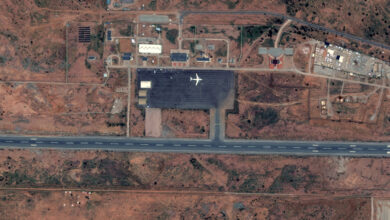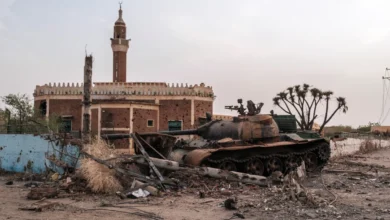Report: The Rise of Khaled bin Mohamed: UAE’s Quiet Power Shift and the Crown Prince Behind the Curtain

In March 2023, the appointment of Khaled bin Mohamed bin Zayed as Crown Prince of the United Arab Emirates was announced with little fanfare. But behind the official statements, a seismic shift in the country’s power structure was quietly set in motion.
For decades, the UAE followed a horizontal succession model, where power rotated among the sons of the late Sheikh Zayed. This not only balanced family influence but ensured internal stability. Khaled’s ascension marked a rupture from this model, introducing direct dynastic succession from father to son — a vertical leap designed by current President Mohammed bin Zayed (MBZ).
Observers quickly noted that this wasn’t a symbolic move. Since becoming Crown Prince, Khaled has exercised real power across three vital domains: national security, media strategy, and technological development. These pillars now form the foundation of his growing authority.
Security: A New Command Structure
Khaled’s most critical move has been to sideline his once-dominant uncle, Tahnoon bin Zayed, who for years controlled the UAE’s intelligence and security networks. Khaled has taken over this apparatus, centralizing loyalty and operations directly under his control.
Key appointments are now made by his inner circle. Surveillance policies and intelligence briefings pass through his office. The restructuring is intentional: Khaled wants no filters between him and the state’s coercive power.
Media: Shaping the Narrative
Parallel to his security overhaul, Khaled controls the Presidential Communications Office, transforming it into a centralized media command center. No message leaves Abu Dhabi without his approval.
This office manages interviews, international press leaks, Western media partnerships, and orchestrates state diplomacy with precision. He has invested heavily in PR firms to repair the UAE’s image, tarnished by involvement in the Yemen war, repression at home, and scandals abroad.
Technology & the “Clean Portfolio”
Khaled is building a technocratic identity, branding himself as the architect of a modern, innovation-driven UAE. He avoids association with oil wealth and murky arms deals, instead focusing on artificial intelligence, digital governance, and green initiatives.
In doing so, he has secured partnerships with U.S. tech companies and presented himself to Washington as a “new generation” leader aligned with Western economic and geopolitical priorities.
Global Engagement: The Quiet Campaign
Khaled has toured Western capitals, met intelligence officials, and cultivated ties with sovereign wealth investors and strategic advisors. His presence is noted in Washington, Tel Aviv, and London — not just as MBZ’s son, but as the de facto leader in waiting.
The Internal Power Game
While Khaled consolidates influence, other royals have been quietly removed or weakened. Tahnoon has receded from the spotlight. Mansour faces growing scrutiny. Hazza is politically inactive. What appears as unity may in fact be a temporary truce.
Conclusion: The Crown Prince or the Real Ruler?
Khaled bin Mohamed bin Zayed may officially be the heir, but in practice, he already operates as the UAE’s chief decision-maker. With full control over the state’s security, narrative, and future economy, his role exceeds the ceremonial.
The West now embraces Khaled as a moderate reformer. Yet beneath the PR campaigns lies a calculated, centralized grab for control. The region watches. So do rivals in the palace. The transition is not complete — but it is very much underway.
Dark Box will continue to monitor.




